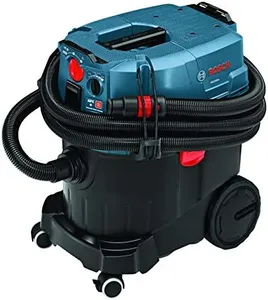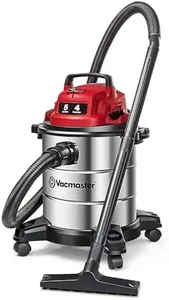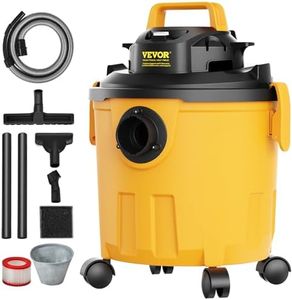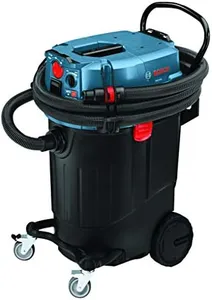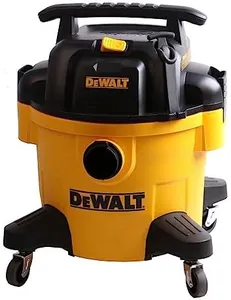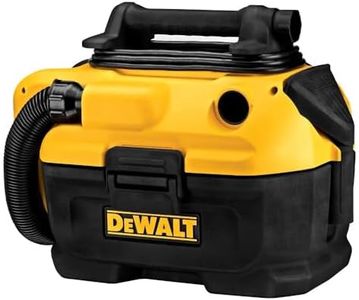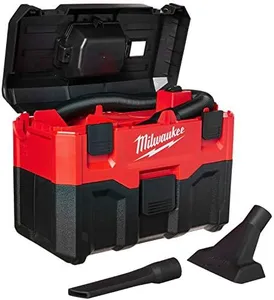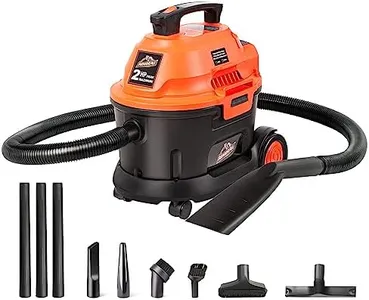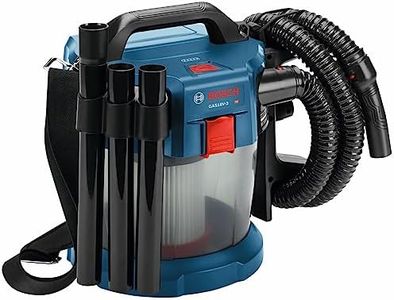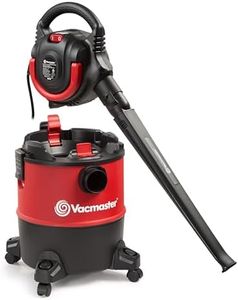We Use CookiesWe use cookies to enhance the security, performance,
functionality and for analytical and promotional activities. By continuing to browse this site you
are agreeing to our privacy policy
10 Best Shop Vacuums
From leading brands and best sellers available on the web.Buying Guide for the Best Shop Vacuums
When choosing a shop vacuum, it's important to think about what kinds of messes you'll be cleaning up and where you'll be using the vacuum. Shop vacuums are designed for tougher jobs than regular household vacuums, so they come in a variety of sizes and strengths. Consider whether you'll be cleaning up dry debris, wet spills, or both, and think about how portable you need the vacuum to be. Understanding the main features will help you pick a model that fits your needs and makes your cleaning tasks easier.Tank CapacityTank capacity refers to how much debris or liquid the vacuum can hold before it needs to be emptied. This is important because a larger tank means you can clean for longer without stopping, but it also makes the vacuum heavier and bulkier. Small tanks (around 2-6 gallons) are good for quick cleanups or small workshops, medium tanks (7-12 gallons) are versatile for most home and garage tasks, and large tanks (14 gallons or more) are best for big jobs or commercial use. Choose a tank size based on how much debris you expect to collect and how much space you have for storage.
Horsepower (HP) or Motor PowerHorsepower or motor power tells you how strong the vacuum's suction is. More power means the vacuum can pick up heavier debris and handle tougher messes. Lower power (around 1-2 HP) is fine for light dust and small particles, medium power (3-4 HP) works well for sawdust, nails, and small spills, while higher power (5 HP or more) is best for heavy-duty cleaning, like large wet spills or construction debris. Think about the types of messes you'll be cleaning most often to decide how much power you need.
Wet/Dry CapabilityWet/dry capability means the vacuum can handle both dry debris and liquid spills. Some shop vacuums are only for dry use, while others can switch between wet and dry modes. If you expect to clean up water, mud, or other liquids, make sure to choose a model with wet/dry capability. If you'll only be cleaning dry messes, a dry-only vacuum may be simpler and lighter.
Portability and WeightPortability and weight affect how easy it is to move the vacuum around your workspace. Lighter, more compact models are easier to carry and store, making them good for small jobs or tight spaces. Larger vacuums with wheels are better for big areas but can be harder to move up stairs or transport. Consider how often you'll need to move the vacuum and whether you'll be using it in multiple locations.
Hose Length and AttachmentsThe hose length and included attachments determine how flexible and versatile the vacuum is. A longer hose lets you reach further without moving the vacuum, which is helpful for cleaning cars or large work areas. Attachments like crevice tools, brushes, and extension wands make it easier to clean different surfaces and tight spots. Think about the types of spaces you'll be cleaning and choose a vacuum with hose length and attachments that match your needs.
Filtration SystemThe filtration system keeps dust and fine particles from escaping back into the air. Basic filters are fine for large debris, but if you're cleaning up fine dust or allergens, look for a vacuum with a HEPA or high-efficiency filter. This is especially important if you have allergies or will be using the vacuum indoors. Choose the filtration level based on the type of debris you'll be cleaning and your sensitivity to dust.
